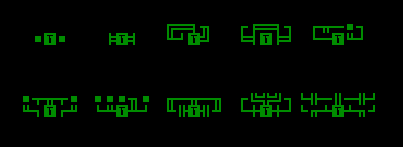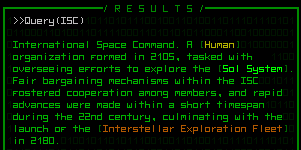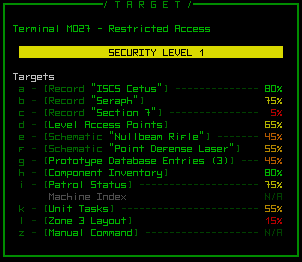 Terminals are the most versatile interactive machine you’ll encounter. Their primary feature is the ability to provide useful information. Of course that information usually doesn’t come without risks, and you’ll be hacking to get it as described in the previous post.
Terminals are the most versatile interactive machine you’ll encounter. Their primary feature is the ability to provide useful information. Of course that information usually doesn’t come without risks, and you’ll be hacking to get it as described in the previous post.
Information
None of the information available through terminals is absolutely essential to the game, so you can safely ignore them if you can’t be bothered, but they generally offer ways to make your journey all that much more survivable by giving you some kind of strategic advantage.
Here are some of the common data targets (the list is still being expanded):
- Level access locations, indicating where you can transfer to a new area
- Schematics for parts and robots (read about using schematics in the next post)
- Robot analysis highlighting the weaknesses of each class
- Prototype ID information for identifying prototypes without experimentation
- Part stockpile locations
- Map data
- Machine location data
- Patrol information and their instructions/goals if engaged in a search
Story
Story details and fluff will be available as hackable “data records.” As you progress you’ll gradually piece together the story by both finding records through different terminals, as well as indirectly hacking through a “chain” of connected records by accessing highlighted keywords.

Keywords leading to other records are highlighted in the entry itself and become clickable buttons colored based on their difficulty. (If you are playing without a mouse, you can still access these through manual hacking.)
Control
Aside from providing information, terminals will also offer some amount of control such as opening sealed doors, disrupting communications, redirecting/recalling patrols, etc. This hasn’t been worked into the game yet, and these and more functions will be added later as necessary when the world mechanics are under development. In any case a complete framework already exists so adding these features will be fairly simple when the time comes.


